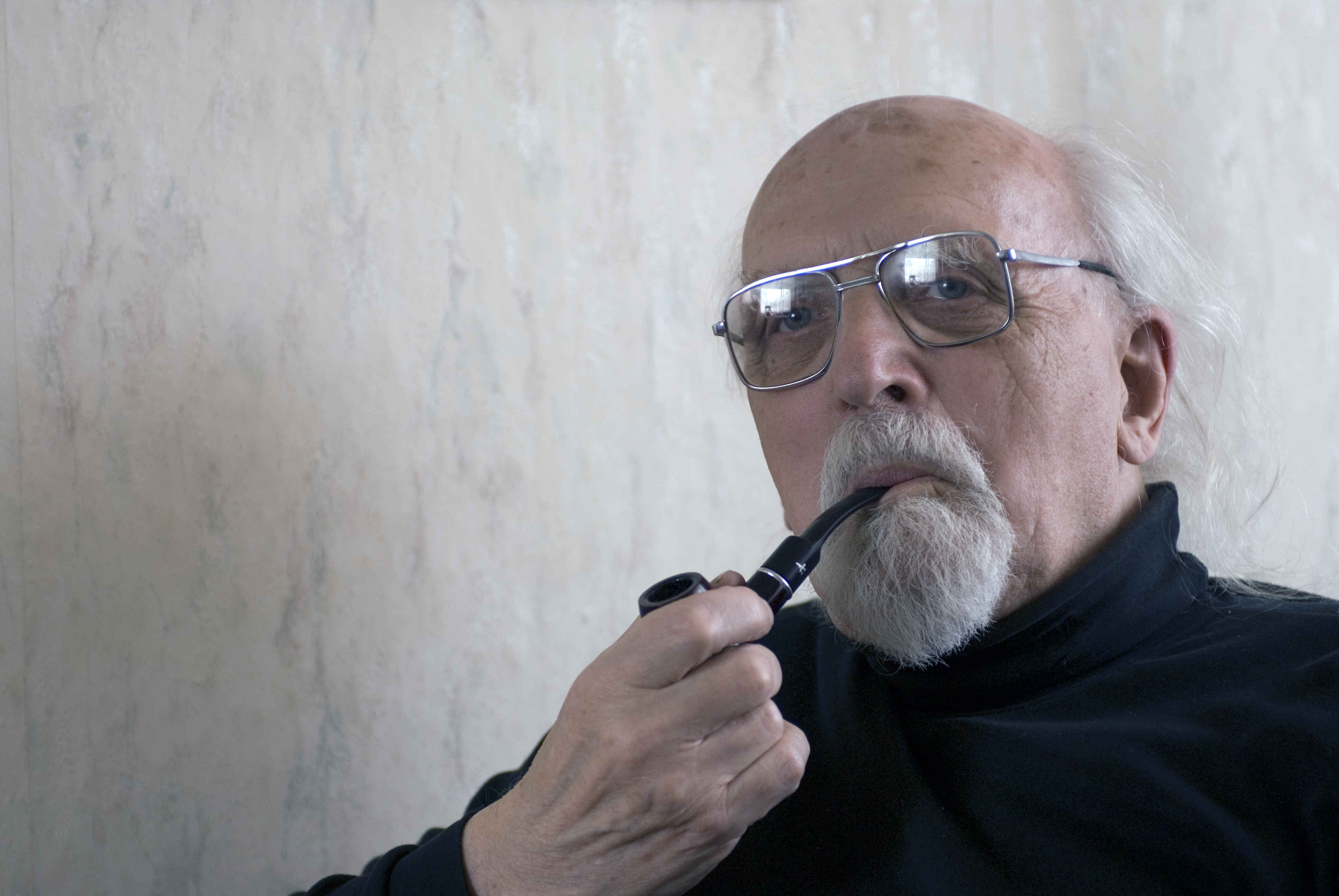
Henn-Kaarel Hellat
Henn-Kaarel Hellat (5. IV 1932 – 13. X 2017) was an Estonian writer who published poetry collections, books of prose and abundant literary criticism, and a science fiction writer of repute.
Hellat came from Viljandi, from the family of the Estonian public figure Jüri Hellat (1892-1942), who had taken part as an officer in the War of Independence. His education began at Westholm’s Progymnasium in Tallinn (1939-1940), and continued at Primary School number 7 in Tallinn (1940-1941), carrying on to Primary and Secondary School number 2 in Viljandi (1941-1948). In 1948-1949 and 1954-1955 Hellat attended night secondary school in Tartu, and thereafter from 1958 to 1961 the faculty of law at the University of Tartu, from which he did not graduate. Hellat began his working life as an assistant in the Tartu chief architect’s office (1949-1951), and thereafter worked as a senior technician at the institute of design engineering in the faculty of architecture and construction in Tartu (1954-1958). From 1961 to 1967 he did various casual jobs. Subsequently he worked as a senior researcher at the Tallinn History Museum (1967-1968), and then in the editorial office of the journals Eesti Kommunist and Küsimused ja Vastused (1968-1975). He was a member of the Estonian Writers’ Union from 1975, after which he worked as a freelance writer (1975-1983). From 1983 to 1985 he was the head of the literature department at the culture newspaper Sirp ja Vasar, and from 1985 to 1986 director of the Literary Propaganda Bureau of the Writers’ Union. There followed another period as a freelance writer (1986-1990), which led to the post of secretary of the Tartu branch of the Writers’ Union (1990-1993).
Hellat was a writer with an intellectual grasp, a good sense of style and a natural wit. Making his debut at a comparatively late age, he has cultivated several genres; he has also been called the godfather of Estonian science fiction. In 1970 Hellat came up with the Estonian neologism ‘ulme‘, which initially meant science fiction, but by now has taken on a much wider meaning, encompassing various sub-genres of fantastic fiction. Etymologically the word ulme derives from ulm, which broadly means ‘dream’.
Deeper interest in science fiction is evinced by Hellat’s own output, including the short-story collection Fuugad paradoksidele (‘Fugues for the Paradoxes’, 1973). In the satirical fantastical story Kergemeelse kosmose hüpotees (‘The Hypothesis of a Light-hearted Cosmos’, 1968), a cosmologist tells of his contact with an extraterrestrial emissary. Humorous musings on the subject of the theory of relativity are sketched in the satirical fantasy story Sekundaaraja paradoks (‘The Paradox of Secondary Time’, 1973), in which, to avert a deficit of time, a time-medicine, capsules and packages, have been invented in the future. Applying the techniques of science fiction and detective literature, Hellat explores everyday thought and action processes in the book Tagamaad (‘Backgrounds’, 2000), which also contains the play Robinsoni päästja (‘Robinson’s Rescuer’).
Hellat’s best known creative achievement is the first Estonian science fiction novel, Naiste maailm (‘Women’s World’, vol. I 1976, vol. II 1978), which speculates from a social standpoint on the possibility of the physical separation of men and women and depicts complex intrigues arising from such an experiment. Dealing with the emergence and functioning mechanisms of an imbalanced, biologically and socially sterile, bureaucratic and corrupted society of women on the planet Rendon, the author shows the danger of a totalitarian system for the fate of every member of it.
A book with elements of crime, Armastusest surmani (‘From Love Until Death’, 1987) consists of two tales that deal with living conditions and relationships. The crime topic is continued in the story Tühiasjad (‘Trifles’, 1989), which is concerned with speculation in the commercial sector. Both books are connected by the satirical depiction of Soviet life through the character of Jaak Lõmme.
Hellat published poetry starting form 1957; his first collection, Vanad fookused (‘Old Focuses’) appeared in 1974. The subjects of his poetry are various kinds of general human problems, individuals’ self-evaluations and interactions with society; impressions from nature also often appear. His treatment is frequently ironical and aphoristic, intellectually dignified and serious. He practised word-play and sonic instrumentation; alongside metric verse he cultivated free verse and haiku.
Hellat published a 5-volume series of autobiographical memoirs, Inimese tegemine (‘The Making of a Man’, 2002-2008), with all kinds of preserved memories and circumstantial materials. He compiled the book Artur Alliksaar mälestustes (‘Artur Alliksaar Remembered’, 2007), containing – among articles by other authors – his own recollections of Alliksaar (Mentor Artur – ‘Artur the Mentor’), and his correspondence with the translator Matti Vaga. The collection of criticism Raamatu sisse minek (‘Getting Into a Book’, 1991) displays the author’s bold, sharp and witty approach.
A. O. (Translated by C. M.)
Books in Estonian
Novels
Naiste maailm I. Tallinn. Eesti Raamat, 1976, 208 lk.
Naiste maailm II. Tallinn. Eesti Raamat, 1978, 208 lk.
Stories
Fuugad paradoksidele. Tallinn: Eesti Raamat, 1973, 134 lk.
Armastusest surmani. Kaks Jaak Lõmme lugu. Tallinn: Eesti Raamat, 1987, 173 lk.
Tühiasjad. Tallinn. Eesti Raamat, 1989, 142 lk.
Tagamaad. Tallinn: Faatum, 2000, 306 lk. [Sisaldab ka näidendit ‘Robinsoni päästja’.]
Poetry collections
Vanad fookused. Tallinn. Eesti Raamat, 1974, 79 lk.
Mälulehed. Kolme kümnendi tekste. Tallinn: Faatum, 1992, 152 lk.
Paturegister. Tallinn: Faatum, 2001, 143 lk.
Salve. Tallinn: Faatum, 2007, 330 lk.
Memoirs
Inimese tegemine. Niidiliimija. Tallinn: Faatum, 2002, 256 lk.
Inimese tegemine. Poiste sõda I. Tallinn: Faatum, 2003, 298 lk.
Inimese tegemine. Poiste sõda II. Tallinn: Faatum, 2004, 238 lk.
Inimese tegemine. Kappan kaugele. Tallinn: Faatum, 2006, 247 lk.
Inimese tegemine. Templis ja tavernis. Tallinn: Faatum, 2008, 280 lk.
Crticism
Raamatu sisse minek. Tallinn: Eesti Raamat, 1991, 238 lk.



